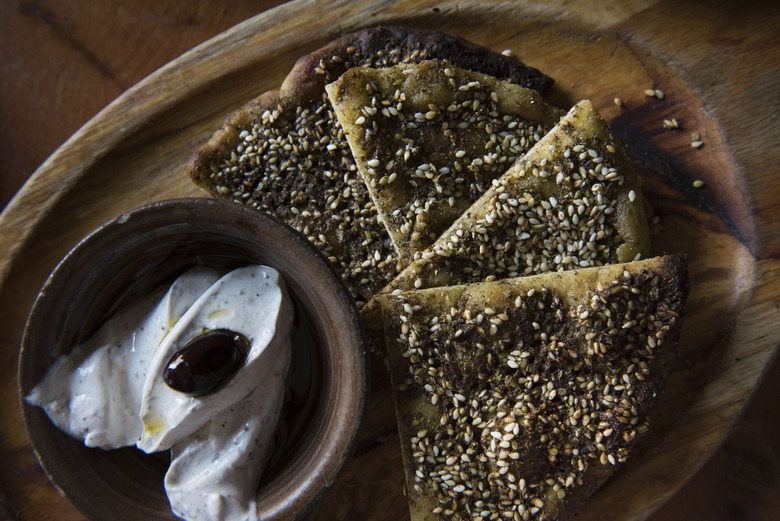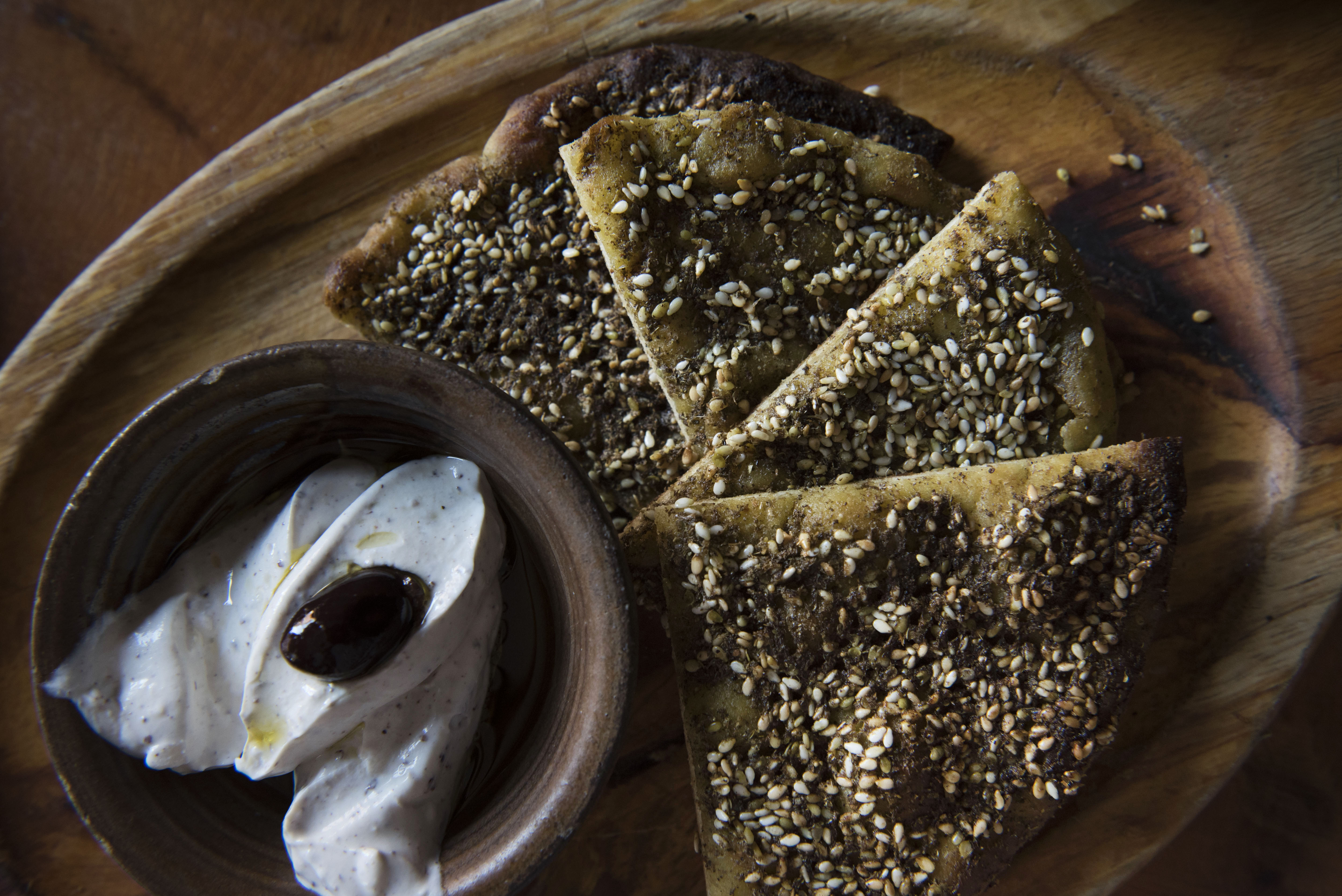A Mother-And-Son Collaboration Redefines Traditional Lebanese Cuisine In New York City's East Village
At the corner of Avenue A and East 12th Street, a restaurant named after Lebanon's signature spice mixture, za'atar — a combination of sun-dried thyme, roasted sesame seeds, finely ground sumac and coarse sea salt — is able to draw folks in from the cold even on one of the slowest nights of the year: the night after Thanksgiving (because travelling, and leftovers, and still sleeping off turkey).
We weren't expecting the feast that was waiting for us at Au Za'atar as we hunkered down and told them to bring us a little of this and that, dishes originally conceptualized in Salwa Fallous' kitchen in Beruit and now served in her son chef Tarik Fallous' kitchen in Alphabet City.
"I always wished for a place to be able to dine in more than once a week with family and friends; to be able to enjoy a variety of dishes that represent the food I grew up eating with the same authentic flavors and taste," explains the younger Fallous. "With Au Za'atar, this wish is now a reality."
The staples in chef Fallous' pantry are Lebanese extra virgin olive oil, bright lemon, fresh herbs, garlic, and custom spice mixtures, created specially for his restaurant by family members in Lebanon and imported on the reg.
Close to half of the lengthy menu is comprised of mezze (small plates), designed to keep you and your dining squad in your seats for hours, similar to how diners eat in restaurants in Beirut, says Fallous, over the span of an entire evening.
More than 25 menu choices are vegetarian, like Arnabeet Mekle, fried cauliflower marinated in Lebanese herbs and spices, which Time Out New York named one of the best vegetarian dishes of the year when the restaurant opened.
Meats are abundant, too—Lebanon's national dish, Kibbeh Kras, is an oval-shaped crust of very finely ground beef and bulgur wheat filled with ground beef, diced onions. It's served alongside a less commonly seen mezze called Makanek, house-made spiced sausages flambéed with fresh lemon juice.
If tartare is your thing, raw meat is served in the form of Kibbeh Nayyeh, and Habra Nayyeh, served in their own blends of seasoning.
Baked flatbreads, or Manae'esh, come with toppings from the classic, Za'atar to Kafte W Jebne Bi Ajin, a style found most commonly among street vendors in Beirut, topped with minced meat (beef and lamb), spices, onions, and topped with melted cheese.
Fish dishes, include Samke Harra, spiced sea bass baked in a skillet with tahini, served over spiced potatoes and nuts alongside Samke Bi Bandoura, branzino fillet baked in a fresh garlic and tomato sauce seasoned with fresh cilantro.
The menu also showcases larger format sharing dishes, traditionally served at weddings and events in Lebano, like a giant, hulking, Dalaa Mahshi, or braised lamb shoulder, stuffed with spiced rice and minced beef garnished with nuts.
It's hearty, to say the least.
As for mom, some of her proudest recipes are stews, which are generally only consumed and found at home tables throughout Lebanon.
Kibbi Labaniyeh, a dish of oval shaped minced beef, stuffed with pine nuts and cooked in a mint yogurt stew.
"You need a good mother to make this one," jokes Chef Fallous. "And it's the dish that a mother will judge her daughter-in-law on too."
For more NYC Restaurant Stories, click here.

